Today we take a trip back to October 1999, before the first decade of Magic: The Gathering had concluded, to examine a set filled to the brim with exciting cards which commander players may have overlooked. Mercadian Masques, the 18th expansion of Magic: The Gathering, is the first set to be considered exempt from the reprint policy colloquially referred to as the Reserved List. Welcome back to the Commander Corner.
Magic was very different back in 1999. The color pie, or the way various colors in the game have specific design limitations, was not as well-defined or as particularly rigid in 1999 as it is today. Additionally, creatures were significantly worse than they are these days. The likes of Ragavan, Nimble Pilferer would be such a ridiculous proposition that you’d be laughed at for insisting it ever be printed. For comparison, the humble Savannah Lions would be reprinted multiple times at rare, all the way through 2005. The core design philosophy of Magic: the Gathering itself has indeed shifted dramatically, and Masques is a wonderful part of that history.
Across the hundreds of cards in the set, there are about 18 reprints excluding basic lands. This leaves around 312 unique cards from which today’s retrospective will pull. I’ve curated these cards based on power level, relative popularity, availability, pricing, and the all-important fun factor. If you enjoy quirky cards from decades past, you’ve come to the right place. With nothing left to discuss but the cards, let’s start with a few honorable mentions. For better or worse, these cards are too popular or expensive to be the focus today.
The powerhouse that is Black Market made its first appearance in this set, being reprinted almost exclusively in commander-themed products since then. Bribery, only printed one additional time after Masques, is widely considered one of the more powerful and unfair cards in Cube and Commander alike. Food Chain was originally printed here, and has been a major player in combo decks for years. Long before Grief, there was Unmask, a Masques original. Premier removal spell Snuff Out, which only has one reprint, is rather well known. With the honorable mentions out of the way, we can now dive into some cards you might’ve never heard of.
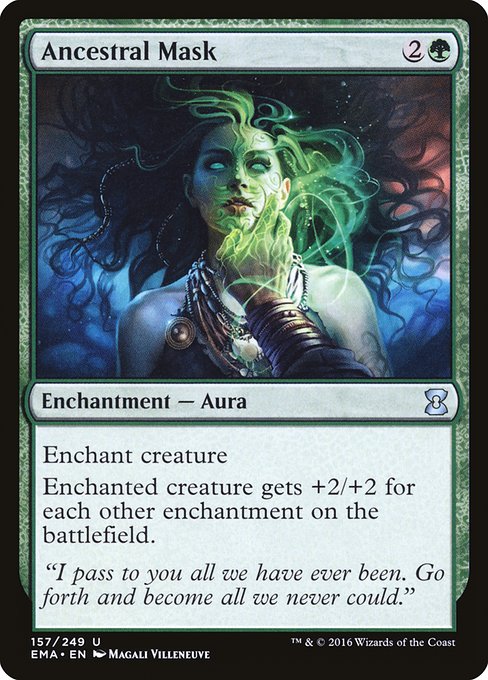
Although Ancestral Mask might be familiar to Pauper players, or those who played Eternal Masters or Mystery Boosters, the card was originally printed in Masques. This is rather fitting when you consider the card name. If you’re playing any kind of enchantress or Voltron-themed deck, this is a relatively cheap way to massively beef up any creature you want. As a bonus, it doesn’t care who the enchantments belong to, meaning the blue player gets a bit of extra punishment for having a Rhystic Study in play.
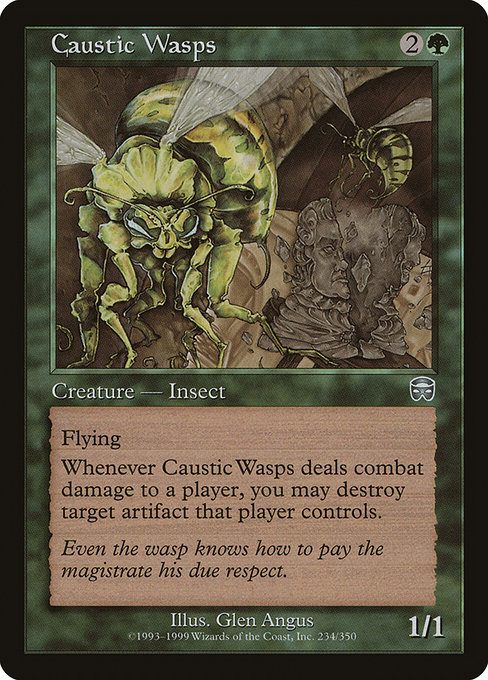
This might be a pale imitation of Trygon Predator for a higher pricetag, but you can play this in non-blue decks. Nobody’s saying you can only play one or the other. Repeated ways to interact with your opponents in mono-green are hardly an unwelcome sight. I look forward to jamming this in any combat-focused deck like Toski, Bearer of Secrets or Edric, Spymaster of Trest. These days, flying creatures in green are few and far between, but at the time this was printable as an uncommon. Notably, Masques is the first and only printing of this acidic insect.
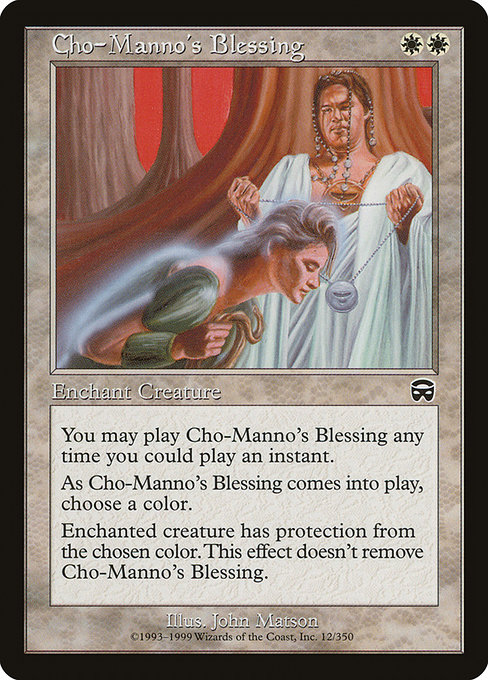
Cho-Manno’s Blessing has only been printed once, and is still an extraordinarily cheap card. For the low cost of 2 mana, you get to blank a removal spell and keep the protection indefinitely. It’s like another copy of Lightning Greaves that also helps you attack and block profitably. I think you should be looking to replace cards like Gods Willing with this instead, unless the instant and sorcery card type matters, like when you’re playing with Feather, the Redeemed. The only downside is that permanent protection from a given color can interfere with your own auras and equipment, but I’m not looking to beat down with cards like Teysa Karlov.

This is the first in a series of four-mana enchantments with bizarre, borderline game-breaking effects that Masques has to offer. This is a great way of keeping the game a bit more fair, as the two life each turn is hardly a cost for the benefit you’re getting. If you’re looking to create a Standstill, few other cards keep the aggression at bay in such a subtle way. As you might expect, this card shines against decks looking to dump a ton of nonland permanents into play, such as mana rocks like Sol Ring and potent creatures like Selvala, Explorer Returned. Be aware, however, that landfall/ramp decks can pretty cleanly avoid feeling too much pain from this.
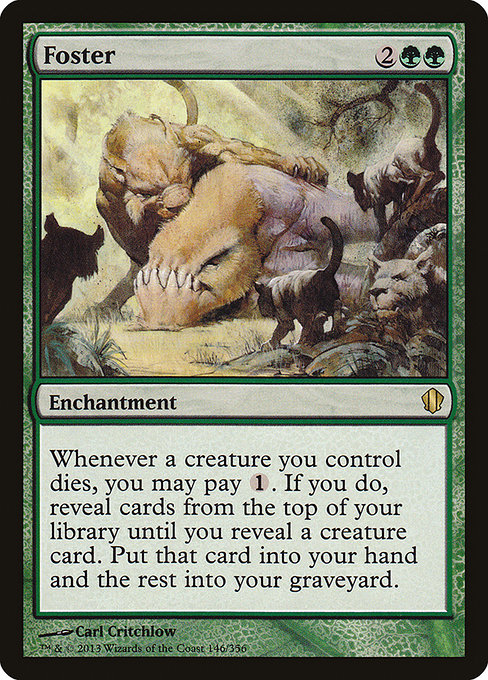
Graveyard value, combo potential, and card selection all combine to make this a very unique card. Whether you’re running next-to-no creatures and want to dump your library into your graveyard, trying to find a specific creature every game, or just trying to replace your expired beef, Foster has you covered. If you have creature tokens, and can get mana out of these death triggers, Foster becomes a very efficient way to churn through your deck fast. Commander 2013 saw this card get its first and only reprint, nearly fifteen years after it was introduced in Masques.
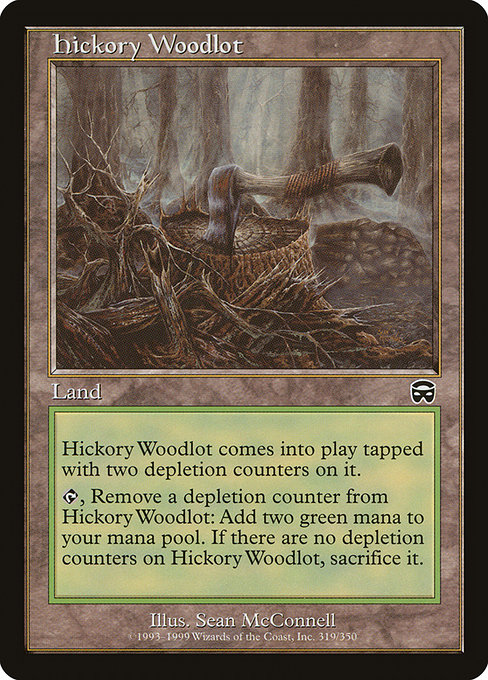
Alongside Saprazzan Skerry. Remote Farm, Peat Bog, and Sandstone Needle, Hickory Woodlot can tap for 2 mana. Of course, their use is limited unless you can get more counters, which is why these made an appearance in my now-retired Atraxa, Praetor’s Voice deck. These are an excellent way to boost your mana production in the early game, and are all-stars in decks with cheap commanders that accrue card or mana-advantage. Unfortunately, these haven’t had a single reprint, which has kept the foils at an astronomically high price compared to non-foils.
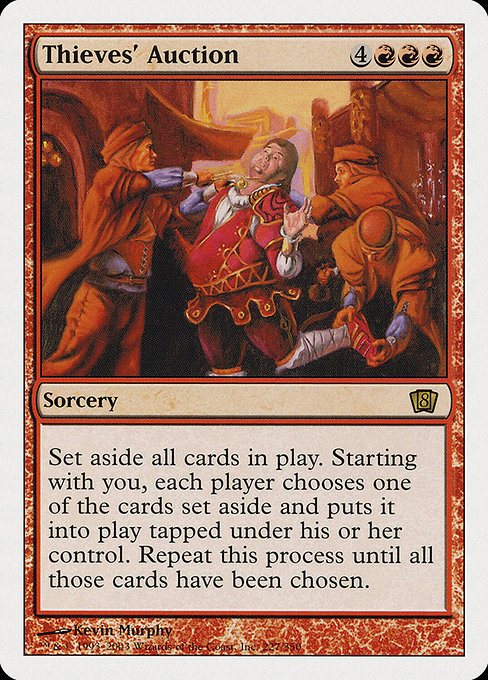
Chaos is a ladder, and with Thieves’ Auction you certainly climb higher. This card can function as a catchup mechanic, a way to steal planeswalkers for huge value, and even a win condition if you can get the right pieces. As soon as this hits the stack, the entire table will pay very close attention. The resulting hilarity will only guarantee you one thing: Fun. This is inarguably one of the silliest cards ever printed when considering the actual effect it has on the game. Unfortunately, it has only had a single reprint since Masques.
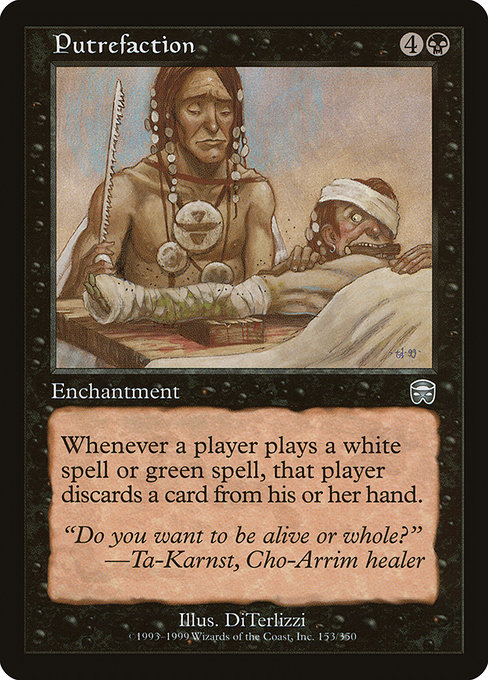
This brutal color-hoser will make any opponent playing green or white wince in pain. For most of those decks, even trying to remove this card will trigger it. You should probably avoid playing Putrefaction against players that aren’t those colors, but color-hosers shine in decks that can pitch cards for value, like Anje Falkenrath. As a rule of thumb, building meta-decks for such a casual format might come off as needlessly competitive, so use color-hosers with caution. If one of your opponents only plays green and/or white decks, they might feel a bit targeted.
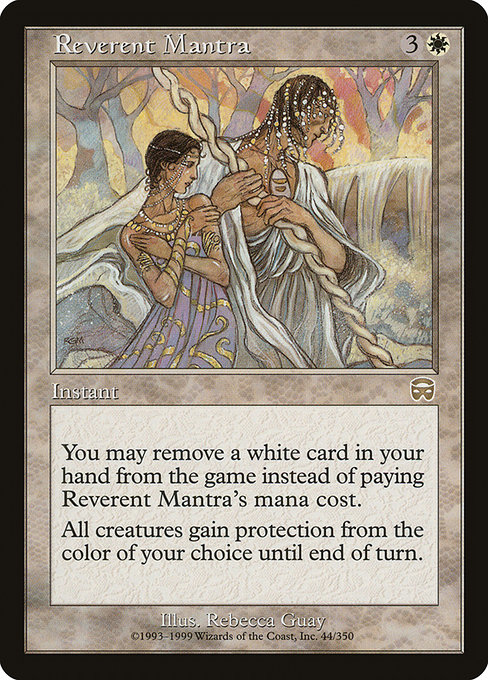
Reverent Mantra is the kind of card that people have to pick up and read to believe. While the effect is certainly strong, it suffers from being occasionally narrow. That said, the versatility of being able to cast a spell for free can never be understated. Four mana is hardly unreasonable in casual decks. If your commander needs to stay alive and draws cards consistently, or if you have a sizable boardstate and a healthy fear of Blasphemous Act, Reverent Mantra will definitely earn its keep. Despite seeming like an easy inclusion in at least a handful of commander preconstructed decks, this card was never reprinted.
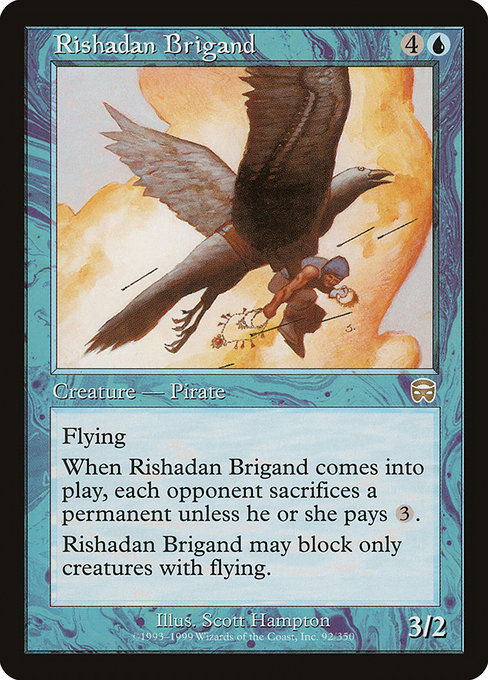
Alongside Rishadan Cutpurse and Rishadan Footpad, Rishadan Brigand is part of a cycle of extraordinarily unique creatures which ask how much mana your opponents have open. At this time in Magic, there would be no such thing as mythic rarity until nearly a decade later, and so this is a complete rarity cycle. While the creatures themselves are a bit meek, the ability to blink and recur them makes the cost negligible when compared to the potential upside. By the grace of Richard Garfield the cards even say “each opponent,” which makes them significantly better than they’d otherwise be. Like many other cards on this list, none of these have seen a single reprint.
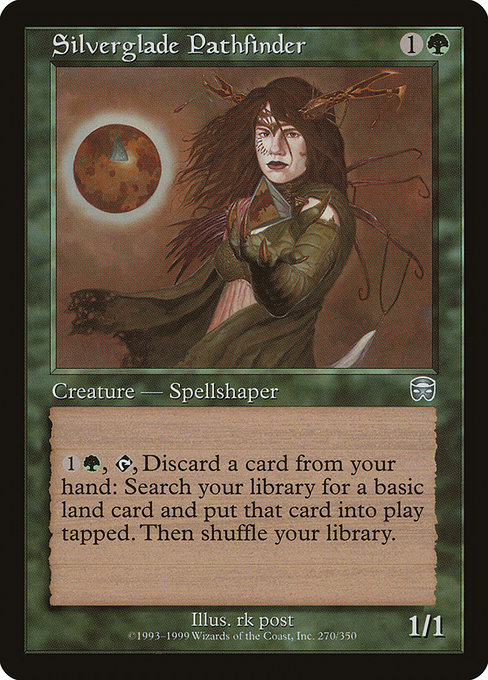
Every masterpiece has its cheap copy, but in this case there are multiple. Elvish Reclaimer at least has the creature type elf, but doesn’t really do that much to ramp you since you have to sacrifice lands. Dreamscape Artist has somehow ended up getting two reprints, but this has none. Sometimes, there is no justice. Silverglade Pathfinder is a repeatable way to turn any card into a copy of Rampant Growth. This shines in landfall decks and can even create combos with cards like Retreat to Coralhelm with some effort.
That’s everything I’ve got for you today. Mercadian Masques has always been one of my favorite sets. If not for the unique designs, for the wonderful flavor. Mercadia itself is intimately tied to Dominaria, Nicol Bolas, and even the Phyrexians invading the multiverse in the upcoming March of the Machine. I can only hope we get some well-deserved reprints or flavorful Mercadia-themed cards in the future. I only had room for the cards you saw above, so there are plenty of cards I couldn’t cover that might be perfect for your deck! As always, I sincerely hope you enjoyed today’s retrospective. I’ve been Luka “Robot” Sharaska, and this has been the Commander Corner!
Luka V. Sharaska (they/them) earned the nickname “Robot” by having a monotone voice, a talent for calculating odds, and a perfect poker face. Robot has been playing Magic for more than a decade, starting during the days of New Phyrexia in 2011.

